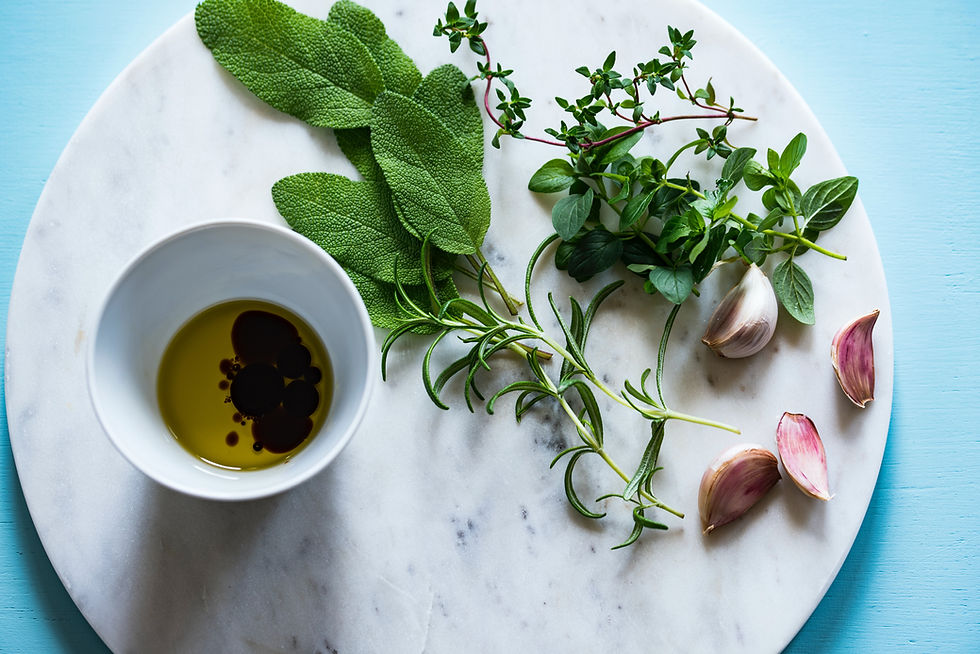Pink salt, Himalayan pink salt or Himalayan salt
- Magaly Ariela Stvil
- Sep 17, 2023
- 3 min read

Pink salt, also known as Pink salt, also known as Himalayan pink salt or Himalayan salt, is a type of salt that is mined from the Punjab region of Pakistan. It gets its pink color from the presence of trace minerals, such as iron, magnesium, potassium, and calcium. While some people believe that pink salt offers health benefits beyond regular table salt, it's important to note that these claims are not universally supported by scientific research. Here are some of the commonly suggested health benefits of pink salt:
Rich in Minerals: Pink salt contains trace minerals that are not typically found in regular table salt. Proponents argue that these minerals can provide health benefits, although the amounts in pink salt are relatively small, and you would need to consume a significant quantity to obtain substantial benefits.
Lower Sodium Content: Some believe that because the crystals in pink salt are larger, you may use less of it compared to finely ground table salt. This could potentially lead to reduced sodium intake, which is important for those who need to monitor their salt consumption.
Balancing pH Levels: Advocates claim that pink salt can help balance the body's pH levels by reducing acidity. However, the body is generally quite effective at regulating its own pH levels, and there is limited scientific evidence to support this claim.
Aesthetic and Culinary Uses: Pink salt is often used for its attractive color and unique flavor. It is commonly used as a finishing salt to add a subtle crunch and a mild salty flavor to dishes.
Potential for Use in Salt Baths: Some people use pink salt in bath salts and claim that it can help relax muscles and improve skin health, but scientific evidence for these benefits is limited.
It's important to exercise caution and not overconsume any type of salt, including pink salt. Excessive salt intake can contribute to health problems such as high blood pressure and heart disease. If you're considering using pink salt for its potential health benefits, it's a good idea to consult with a healthcare professional, especially if you have specific health concerns or dietary restrictions.
In summary, while pink salt does contain trace minerals that regular table salt lacks, the health benefits associated with it are largely anecdotal or inconclusive based on current scientific research. If you choose to use pink salt, do so in moderation as part of a well-balanced diet, and be mindful of your overall sodium intake., is a type of salt that is mined from the Punjab region of Pakistan. It gets its pink color from the presence of trace minerals, such as iron, magnesium, potassium, and calcium. While some people believe that pink salt offers health benefits beyond regular table salt, it's important to note that these claims are not universally supported by scientific research. Here are some of the commonly suggested health benefits of pink salt:
Rich in Minerals: Pink salt contains trace minerals that are not typically found in regular table salt. Proponents argue that these minerals can provide health benefits, although the amounts in pink salt are relatively small, and you would need to consume a significant quantity to obtain substantial benefits.
Lower Sodium Content: Some believe that because the crystals in pink salt are larger, you may use less of it compared to finely ground table salt. This could potentially lead to reduced sodium intake, which is important for those who need to monitor their salt consumption.
Balancing pH Levels: Advocates claim that pink salt can help balance the body's pH levels by reducing acidity. However, the body is generally quite effective at regulating its own pH levels, and there is limited scientific evidence to support this claim.
Aesthetic and Culinary Uses: Pink salt is often used for its attractive color and unique flavor. It is commonly used as a finishing salt to add a subtle crunch and a mild salty flavor to dishes.
Potential for Use in Salt Baths: Some people use pink salt in bath salts and claim that it can help relax muscles and improve skin health, but scientific evidence for these benefits is limited.
It's important to exercise caution and not overconsume any type of salt, including pink salt. Excessive salt intake can contribute to health problems such as high blood pressure and heart disease. If you're considering using pink salt for its potential health benefits, it's a good idea to consult with a healthcare professional, especially if you have specific health concerns or dietary restrictions.
In summary, while pink salt does contain trace minerals that regular table salt lacks, the health benefits associated with it are largely anecdotal or inconclusive based on current scientific research. If you choose to use pink salt, do so in moderation as part of a well-balanced diet, and be mindful of your overall sodium intake.





Comments